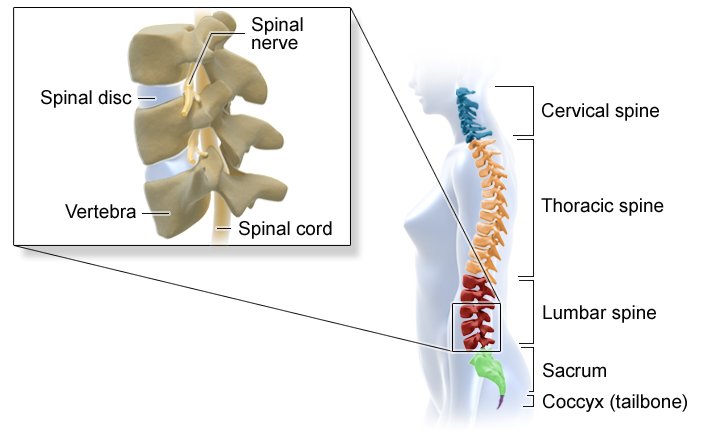Not known Facts About A Patient's Guide to Anatomy and Function of the Spine

Top Guidelines Of MRI of the Lumbar Spine: About This Test

right and left sides of L1 to L5. offers experience to your groin and genital location and helps move your hip muscles. offer experience to the front part of your thigh and inner side of your lower leg. These nerves also control hip and knee muscle motions. provides feeling to the external side of your lower.
leg, the upper part of your foot and the area in between your very first and second toe. includes the L4 and L5 nerves plus other sacral nerves. Your sciatic nerve begins in your rear pelvis and runs down the back of your leg, ending in your foot. Capillary of the back spine Branches of the big abdominal aorta supply blood and nutrients to the vertebrae, muscles and ligaments of your back area. These issues can restrict movement in your back or hips and cause pain, weak point and numbness or tingling in your back, hip, thigh or leg. Illness, conditions and conditions impacting your back spinal column consist of: Lower back discomfort is a typical sign of various injuries and medical conditions.

Bones of the Lumbar Spine and Pelvis

Spinal Anatomy Including Transverse Process and Lamina
Common causes consist of degenerative conditions(osteoarthritis, ankylosing spondylitis, back stenosis, herniated disk, pinched nerve), back pressures and sprains, back fractures, developments (growths, cysts, bone spurs)and spondylolisthesis. In your back spinal column, this implies less space for the nerves that branch off of your spine. A tightened upspace can trigger your spinal cable or nerves to end up being irritated, compressed or pinched. The symptoms of lumbar stenosis consist ofpain, pins and needles or weakness in your legs, groin, hips, butts and lower back.

Two Minutes of Anatomy: Lumbar Spine - YouTube
This condition happens when a back vertebra slips out of place relative to the vertebra listed below it. This can trigger pressure on a nerve, which can cause lower pain in the back or leg pain. A fracture to the bones of your spine can result from compression (typically from minor injury in a person with osteoporosis)or be a burst fracture (vertebra that is squashed in all instructions), a fracture-dislocation(primarily from automobile mishaps or falls from heights )or arise from a growth on your spine. This is an excessive curve in your lower back. Lordosis puts excessive pressure on your lumbar vertebrae. It's brought on by disease, bad posture or extreme bending of your back. Large muscles support your lumbar spine area, permitting you to move your trunk in all instructions. This Is Cool can spasm or become strained, which is a typical cause.
